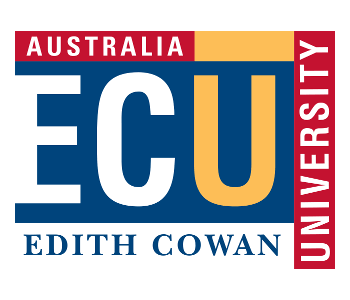Bachelor of Engineering (Naval Architecture) Honours
Edith Cowan University
About
This course is offered in collaboration with the Australian Maritime College at the University of Tasmania in Launceston, Tasmania.
Naval architects are professional engineers who design and oversee the construction and repair of marine craft and various offshore structures.
This includes naval craft, passenger and cargo ships, submarines, high-speed ferries and catamarans, tugs, yachts and offshore drilling platforms.
Naval architects understand the properties of the environments in which marine craft operate and determine ways to optimise their operations to meet operational, safety and performance goals.
Structure
Students are required to complete 32 units (16 units are AMC units) and a 12-week approved practicum.
Year 1 - Semester 1
| Unit Code | Unit Title | Credit Points |
|---|---|---|
| ENS1154 * | Introduction to Engineering | 15 |
| ENS1115 | Materials and Manufacturing 1 | 15 |
| ENM1102 | Engineering Drawing and Computer Aided Design | 15 |
| MAT1250 | Mathematics 1 | 15 |
Year 1 - Semester 2
| Unit Code | Unit Title | Credit Points |
|---|---|---|
| ENS1101 | Engineering Mechanics | 15 |
| ENS1253 | Electrical Engineering 1B | 15 |
| ENS1180 | Introduction to Energy and Resource Engineering | 15 |
| MAT1251 | Mathematics 2 | 15 |
Year 2 - Semester 1
| Unit Code | Unit Title | Credit Points |
|---|---|---|
| ENS5170 | Engineering Systems | 15 |
| ENS2102 | Hydrostatics | 15 |
| ENM3218 | Fluid Mechanics | 15 |
| CSP2151 | Programming Fundamentals | 15 |
Year 2 - Semester 2
| Unit Code | Unit Title | Credit Points |
|---|---|---|
| ENS2113 | Engineering Dynamics | 15 |
| ENS2160 | Thermodynamics | 15 |
| ENS2103 | Ship Design and Production | 15 |
| ENS3190 | Mechanics of Solids | 15 |
Note: In general, all units in the first two years must be completed successfully before transfer to AMC can be approved.
Years 3 and 4
Years 3 and 4 of this course are provided by the University of Tasmania (Australian Maritime College) in Launceston, Tasmania. For details of the following units, please consult the UTAS handbook which can be found online at: http://courses.utas.edu.au
AMC Core Units
JEE329: Seakeeping and Manoeuvering
JEE332: Structural Analysis
JEE333: Resistance and Propulsion
JEE337: Hydrodynamics
JEE350: Finite Element Analysis
JEE416: Advanced Ship Structures
JEE418: Research Project 1
JEE419: Research Project 2
JEE421: Design Project 1
JEE422: Design Project 2
JEE480: Applied Computational Fluid Dynamics
JEE358: Bluefin: Maritime Engineering
AMC Specialisation Units
To complete the course, students are required to choose a specialisation in Ship and Underwater Vehicles or in Yacht and Small Craft. Each specialisation requires 4 units to be chosen in consultation with the AMC Course Coordinator. The elective units available may depend on the specialisation chosen.
JEE335: Applied Ship Design (Ship)
JEE353: Applied Ship Design (Yacht and Small Craft)
JEE354: Underwater Vehicle Technology
JEE417: Yacht and Small Craft Design
Elective 1
Elective 2
* Students will be assessed to see if they have achieved the ECU minimum standard of English language proficiency in this unit. Students who don't meet the minimum standard will be provided with appropriate English language support and development.
Entry requirements
Admission requirement (Band 4)
All applicants must meet the academic admission requirements for this course. The indicative or guaranteed ATAR is as published (where applicable) or academic admission requirements may be satisfied through completion of one of the following:
- AQF Diploma or equivalent;
- Successfully completed 0.5 EFTSL of study at bachelor level or higher at an Australian higher education provider (or equivalent);
- Special Tertiary Admissions Test;
- University Preparation Course;
- Indigenous University Orientation Course; or
- Aboriginal University Readiness Assessment.
English Language requirement (Band 3)
English competency requirements may be satisfied through completion of one of the following:
- Year 12 English ATAR/English Literature ATAR grade C or better or equivalent;
- Special Tertiary Admissions Test;
- IELTS Academic Overall band minimum score of 6.0 (no individual band less than 6.0);
- Successfully completed 1.0 EFTSL of study at bachelor level or higher in the UK, Ireland, USA, NZ or Canada;
- University Preparation Course;
- Indigenous University Orientation Course;
- Aboriginal University Readiness Assessment;
- AQF Diploma, Advanced Diploma or Associate Degree;
- Successfully completed 0.375 EFTSL of study at bachelor level or higher at an Australian higher education provider (or equivalent); or
- Other tests, courses or programs as defined in the Admissions Policy.
Course Specific Admission Requirements
All applicants are required to have Mathematics: Methods ATAR, with equivalents considered, and Physics ATAR or Engineering Studies ATAR, with equivalents considered. It is desirable that all applicants have Mathematics: Specialist ATAR, with equivalents considered.
Portfolio pathway applications are not accepted for this course.
Learning outcomes
- Demonstrate advanced knowledge of the underpinning natural and physical sciences and in depth understanding of specialist bodies of knowledge within the naval architecture engineering discipline.
- Think critically, and apply established engineering methods and research skills to complex naval architecture engineering problem solving.
- Apply systematic engineering synthesis and design processes to conduct and manage naval architecture engineering projects, with some intellectual independence.
- Demonstrate conceptual understanding of the mathematics, numerical analysis, statistics and computer and information sciences which underpin the naval architecture engineering discipline and fluently apply engineering techniques, tools and resources.
- Demonstrate clear and coherent oral and written communication in professional and lay domains.
- Demonstrate a global outlook and knowledge of contextual factors impacting the engineering discipline, including respect for cultural diversity and indigenous cultural competence.
- Demonstrate effective team membership and team leadership to implement engineering projects according to relevant standards of ethical conduct, sustainable practice and professional accountability.
- Demonstrate responsibility for own learning, professional judgement and an understanding of the scope, principles, norms, accountabilities and bounds of contemporary engineering practice.
Institution
